A world of photo contests and awards
Photocrowd is a contest platform for the best photo contests and photo awards around, with a global community of photographers of all levels and interests.
Images should be saved as jpegs at the highest quality available, with a colour profile attached. Either the RGB or sRGB colour profiles are recommended. Digital scans from film are also eligible providing they meet these technical guidelines.
Whilst no image sizes will be rejected at upload, winning images may be required to be printed, and so must be of sufficient quality to allow this. It is therefore advised that images measure a minimum of 2,500 pixels on the shortest side after any cropping. Where images submitted are smaller than this, it will be assumed that this is the largest image size available to the photographer, and may affect that image’s chances of winning. The submission of larger file sizes is encouraged if available.
There are Photoshop and other image software tutorials online that show you how to best resize an image.
There are some restrictions on the use of digital manipulation of submitted images.
Images submitted to the Bug Photography Awards must essentially show the scene and subjects as they were shot. They must not combine multiple different elements in one shot.
Focus stacking and similar techniques necessarily require the combining of multiple images, and this is allowed. However images of fundamentally different subjects or backgrounds that have been brought together into one image are not allowed.
Examples of this would be:
- Multiple different creatures shot separately then combined into one image to give the appearance that they were in the same place at the same time
- Creatures being cloned out of the background they were shot against and dropped into different backgrounds (unless the backgrounds were very similar, or of no consequence to the overall effect of the image)
Photographers may make reasonable use of digital darkroom techniques which enhance quality but do not distort the photograph. Major alterations should be avoided, although the cloning out/removal of elements in an image is allowed, so long as this does not fundamentally change the likely interpretation of the behaviour of the creature in the image.
Adjustment to levels, curves, colour balance, colour saturation, dodging and burning, selective adjustments using layers and blemish and dust spot removal are all examples of acceptable manipulation.
Any changes to the original Photograph not itemised here are unacceptable and will render the Photograph ineligible for a prize. A copy of the original camera file may be requested for all images that are included in the shortlist for each category.
We reserve the right to eliminate entries where such a request is ignored or where it is suspected that the rules have been infringed.
Excessive sharpening, noise reduction and color saturation techniques should be avoided. We appreciate that entrants will attempt to prepare their entries to optimise appearance and appeal on screen, and this may include these techniques.
Excessive use of any or all of them can result in an entry that will be unsuitable for printed media and therefore become invalid as a result.
We encourage photographers to include a description about their work during the upload process, including where known the name of the creatures. This is a great way to tell a story or other interesting facts about your image, and the judges will be able to read this while rating to give them insight into the creature and how you took the shot.
We would advise all entrants to add copyright information in the metadata of all submissions.
